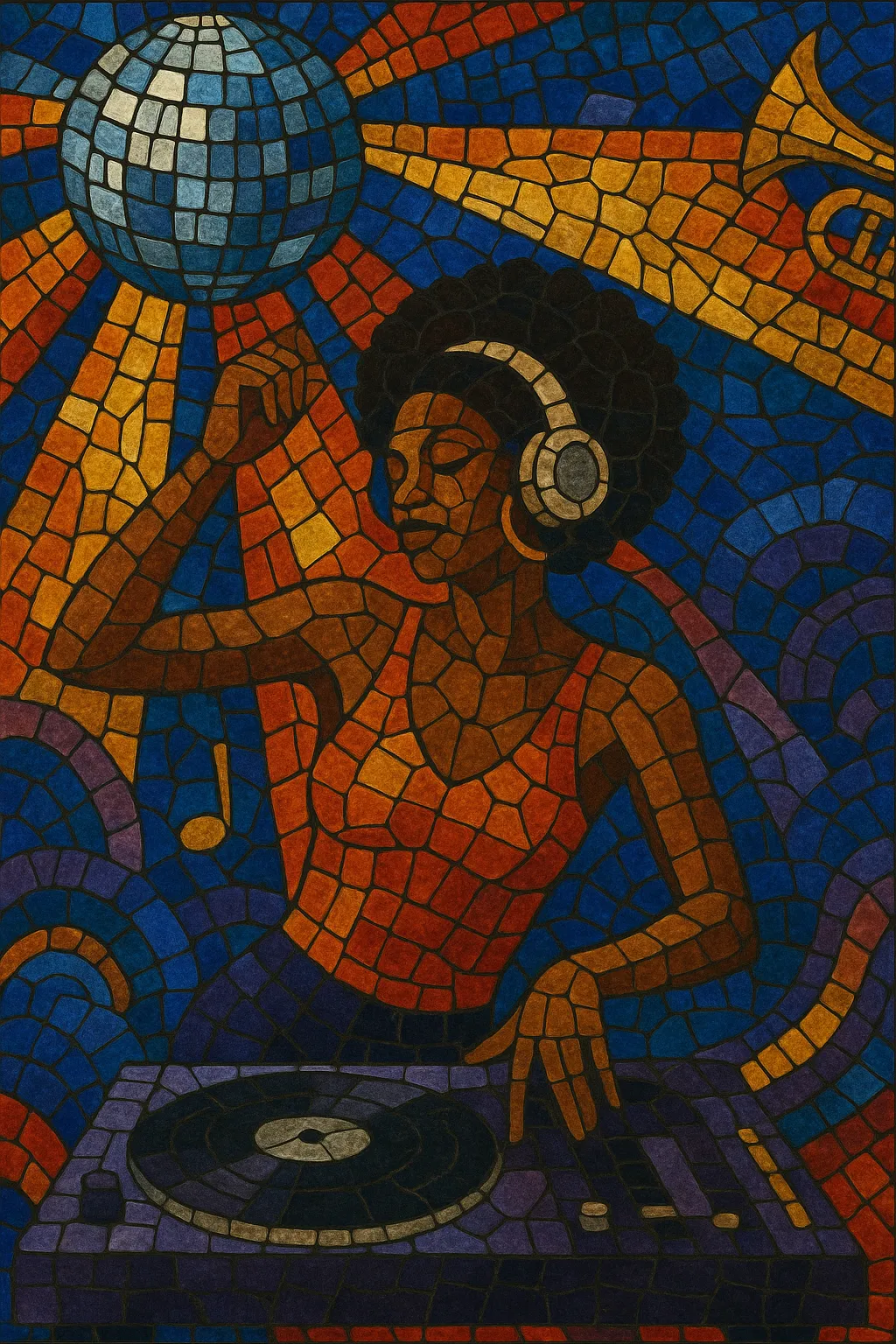Disco house is a subgenre of house music that fuses the four-on-the-floor pulse and DJ/club culture of house with the songcraft, instrumentation, and feel-good ethos of 1970s disco and late-1970s/early-1980s post‑disco.
Characterized by looped and filtered samples of disco strings, rhythm guitars, horn stabs, and soulful vocals, it commonly employs low‑pass filter sweeps, pumping sidechain compression, and swung hi‑hats to create a warm, euphoric, and dance‑centric groove. Typical tempos range from 118–128 BPM.
The style is closely associated with the mid‑to‑late 1990s “French Touch” wave (Parisian producers popularizing filtered disco loops), but its roots include Chicago house’s sample-based approach and the lush arrangements of Philadelphia soul.
Disco house emerged as DJs and producers began looping and recontextualizing 1970s disco and late-1970s/early-1980s post‑disco/boogie records over house drum frameworks. Chicago house had already normalized sample‑based grooves, but acts like The Bucketheads (Kenny Dope) signaled a clear disco-forward direction with tracks such as “The Bomb! (These Sounds Fall into My Mind)” (1995).
Paris became the movement’s epicenter. Producers including Daft Punk, Cassius, Alan Braxe, DJ Falcon, and the Stardust project helped define the filter‑loop aesthetic—low‑pass filtered disco samples that open and close to build tension. Landmark singles like “Music Sounds Better With You” (Stardust, 1998), “Around the World” and “Da Funk” (Daft Punk), and “1999” (Cassius) brought the sound to global club and pop audiences.
The sound continued to permeate mainstream dance and pop via artists like Modjo (“Lady (Hear Me Tonight)”), Bob Sinclar, Dimitri From Paris, and Joey Negro (Dave Lee). Sample clearance became more scrutinized, pushing some producers to replay parts rather than directly sample, but the core palette—strings, guitar chanks, horn riffs, soulful vocals—remained central.
A nu‑disco renaissance reinvigorated disco house aesthetics. Labels and parties (e.g., Defected/Glitterbox) and artists like Purple Disco Machine brought polished, radio‑friendly productions that still nod to vintage disco orchestration. The genre now thrives both as club‑focused filter‑loop house and as song‑driven, replayed‑instrumentation cuts for festivals and charts.


